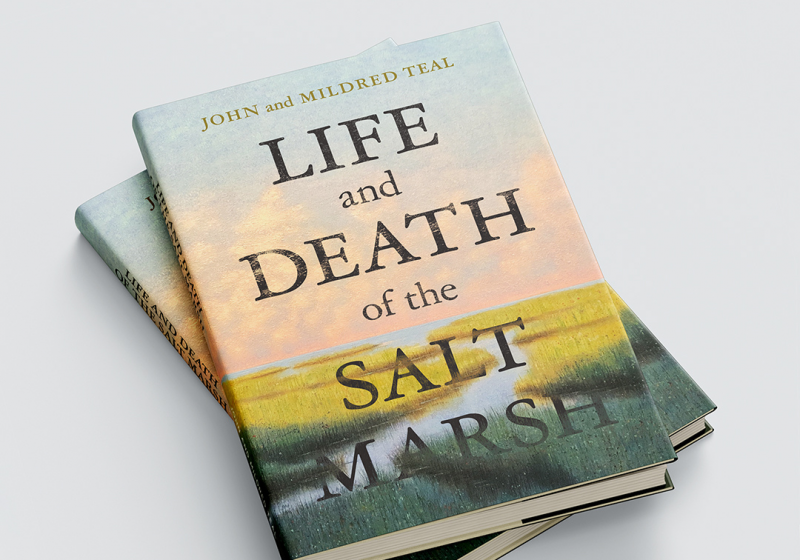Landmark Life and Death of the Salt Marsh Re-Released
Fifty-five years ago, Woods Hole scientists John and Mildred Teal’s Life and Death of the Salt Marsh motivated a generation of coastal citizens and lawmakers to advocate for arguably the most important ecosystem in a seaside region. The Coalition has re-released the breakthrough text as the salt marsh’s worst threat—climate change—looms large.
Mark Rasmussen, President of the Buzzards Bay Coalition, wrote this edition’s foreword and notes that today two-thirds of the value of the commercial catch of fish and shellfish landed on the East Coast of the United States comes from species that live at least part of their life cycle in the marsh-estuaries. What’s more, climate change-driven sea level rise is drowning salt marshes in place at an alarming rate.
“Of Buzzards Bay’s nearly 5,000 acres of saltmarsh, approximately 7% of them—were lost between 2001 and 2019,” says Rasmussen. These new data come from twelve study sites—from Westport to Falmouth—featuring a wide range of marsh configurations. Some marshes studied, like those on Mattapoisett Neck, saw dramatic losses of 23% of their area.
One of Rasmussen’s first jobs was spent delivering the Coalition water quality samples from around the Bay and filtering them for nutrient analysis. “I also helped to spread fertilizer onto experimental plots in the Great Sippewissett salt marsh—a long-term study which John Teal helped start and maintain,” he says. Rasmussen was assigned Life and Death of the Salt Marsh in his first college Ecology class.
This hardcover edition boasts a new cover visual designed by Mattapoisett-based designer Hannah Haines; paintings for the cover were donated by Peter Stone of Marion. Copies of the book are available for purchase at Davol’s General Store in Dartmouth, The Drawing Room in New Bedford, Eight Cousins in Falmouth, Partners Village Store in Westport, and Bunch of Grapes in Vineyard Haven. You can also purchase it through the Coalition website www.savebuzzardsbay.org/books.